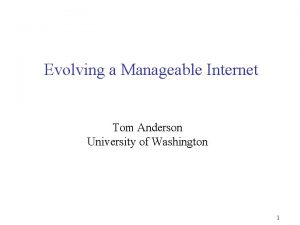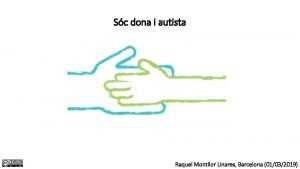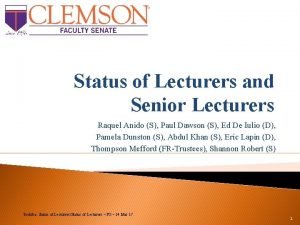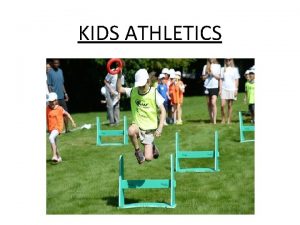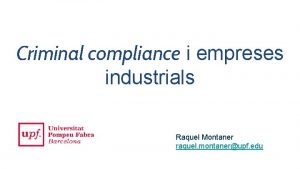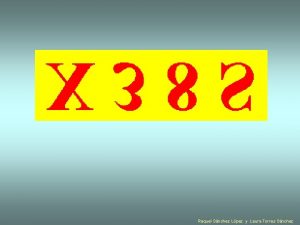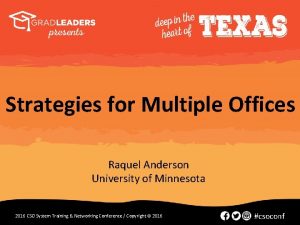Athletics and the University Raquel Anderson University of











- Slides: 11

Athletics and the University Raquel Anderson University of Southern California EDCO 570 July 2012

In the first quarter of 2012…student debt was $870 billion

Costs of a Student Education • Of that $870 billion, $36 billion belonged to people who were 60 and over – co-signers to their children’s and grandchildren’s student loans. • Annual tuition increases have been approaching 15 and 20 percent in different parts of the United States. • Student fees cover a large part of athletic expenses at many universities. • Should this continue?

Big Money in College Athletics • The men’s basketball and football programs in the NCAA bring in more than $6 billion in revenue each year. That’s more than the NBA. • Urban Meyer will make $4 million a year to coach football at Ohio State. • CBS and Turner Broadcasting just paid $10. 8 billion to televise March Madness for the next 14 years. • Corporate giants pay millions each year to put their names all over college stadiums and arenas.

So, Why Should Students Pay? • Athletic departments at the most successful Division I programs claim they can’t pay a $2, 000 stipend to make up the difference between an athletic scholarship and the cost of going to school. • Why should student fees cover this?

Research Questions • Should college athletes receive stipends that cover the difference between the value of their scholarships and the cost of their actual expenses for lodging and books at the university? • Should college football continue to be an activity sponsored by universities, or should college football sever itself from the institution, except for paying to retain the name and the mascot, and be treated as a minor league for the National Football League? • Has college athletics, particularly football and men's basketball, become so much of a business that its players have become students in name only?

Research Questions (cont’d. ) • Would college students maintain allegiance to its campus' football and basketball teams if they became developmental league teams associated with the campus, instead of teams populated with campus students, much like the minor league teams in various sports that are associated with various smaller cities around the United States? • How much of the tuition and fees for each student should go to fund athletic programs? • How often do college students attend athletic events other than football and men's basketball?

The Sample and Population • 300+ undergraduate students • Why undergraduates? – Tuition and fees the least likely to be supported by grants and stipends – The most vulnerable to hikes, because of the length of time it takes to get an undergraduate degree

The Hypothesis • In general, students enjoy having athletic programs on their campuses. • However, actual attendance for many of these programs will turn out to be much lower than the rate of reported enjoyment. • Also, students will show a relative ambivalence about the quasi-professional status of the athletes on their campus. • Finally, the majority of students will want very little, if any, of their own tuition and fees to go to support athletic teams on their campus.

Analyzing the Data • The sample group will receive a questionnaire through Survey Monkey. • The attitudinal scores will be evaluated using Likert-type analysis. • The results will be presented as a narrative, as befits the outcomes of a qualitative study.

References • Video Links • http: //www. statepress. com/2011/03/29/stud ents-raise-concerns-over-tuition-increases/ • http: //sports. espn. go. com/ncaa/news/story? i d=6254572


